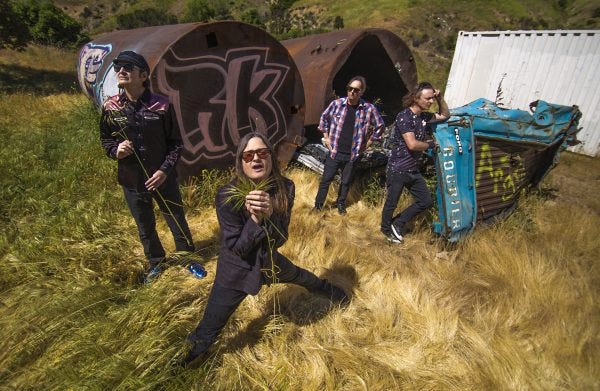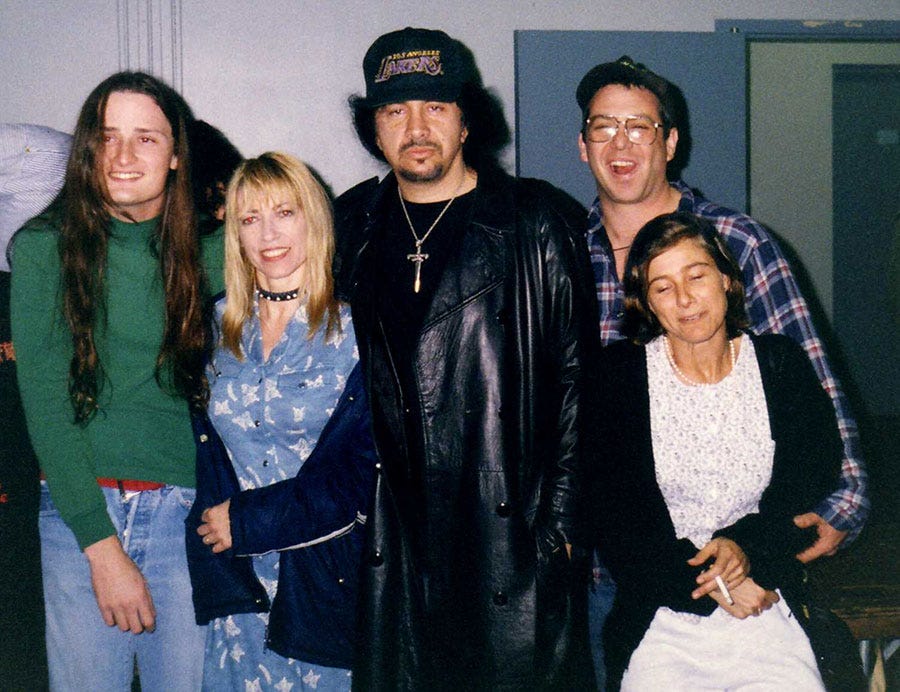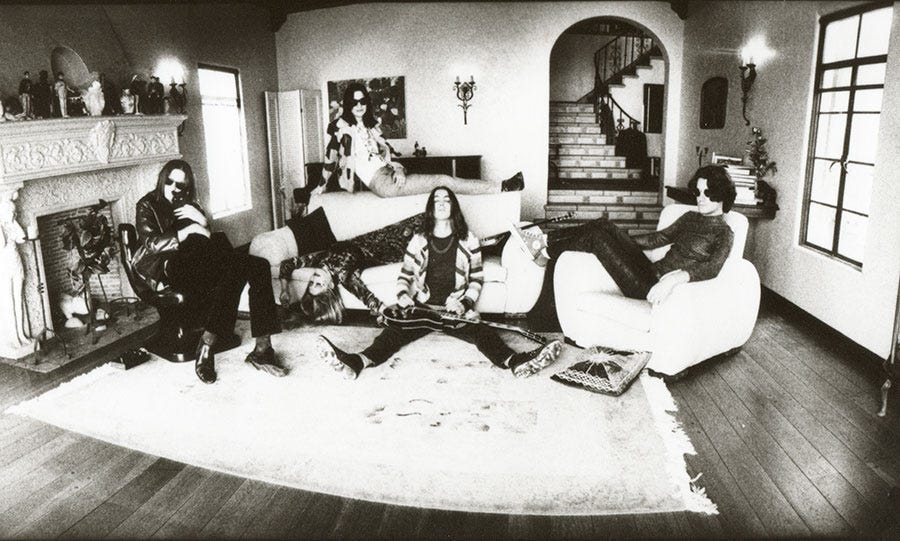Yesterday Once More
My Interview with Steve McDonald of Redd Kross
When Hawthorne, CA eighth-grader Lisa Stengle asked the only band she knew – two brothers named Jeff and Steve McDonald – to play her middle school graduation party, she probably was not expecting that her backyard gathering would be an important moment for the nascent Southern California punk scene. Calling themselves The Tourists briefly before changing their name to Red Cross, the brothers asked if their older friends, a fresh Hermosa Beach foursome called Black Flag, to play the house party. As legend goes the first Red Cross gig didn’t go so well. The quartet, rounded out by drummer John Stielow and future Circle Jerks/Bad Religion guitarist Greg Hetson, was mocked and jeered by the teenagers. Encouraged by Black Flag to keep pushing, the duo eventually released a self-titled EP on local indie label Posh Boy Records. Soon after the release of their EP, the teenage McDonalds received a threat of a lawsuit from The International Red Cross, leading to a second and final name change: Redd Kross.
Though the name Redd Kross remained, the band’s lineup and sound have been in flux for over 45 years. The imagination of Steve and Jeff McDonald is the only constant as Redd Kross shapeshifted through glam, bubblegum pop and neo-psychedelia. They eschewed trends, even when they were the trendsetters themselves. Now with a new album on In The Red Records, a forthcoming memoir and a documentary screening film at festivals globally, the band is finally reflecting on what Redd Kross has accomplished. While Redd Kross never found the commercial success of their contemporaries, bands like Nirvana and Sonic Youth always cited them as an influence. 57-year-old Steve McDonald, long considered one of the most charming, witty men in rock and roll, was gracious enough to sit through a Zoom call with me while I hammered him with questions that had been lurking in the back of my brain since I became a fan at the age of fifteen. We talked about the band's primordial punk state, covering songs by Charles Manson and The Brady Bunch, and the generation of Nashville bands like Be Your Own Pet and Cheap Time, who discovered Redd Kross during their nine-year hiatus. Redd Kross will be in Nashville at Third Man’s Blue Room on August 2nd.
It has been discussed ad nauseam the differences between Gen X’s pre-internet discoveries of underground music and the later generations who had access to things like torrent sharing or streaming services. Those of us who didn’t have access to an older sibling or a cool record store clerk to function as a guide were often left to our own devices in the wilderness of rock’n’roll that was too far to the left of where a radio dial would turn. Like many of my peers, I would discover new music any way I could, scouring thanks lists in liner notes or looking to see who tastemaking artists like Sonic Youth would take on tour as an opener. And I was the king of getting the “wrong” record. I am not sure how I heard first Redd Kross, but I know I was 15 years old. I had seen their name thrown around with other bands I knew were cool — Black Flag, Circle Jerks, Dinosaur Jr. But I arrived as a Redd Kross fan after 2 record store purchases happened in 1994, though in the haze of 30 years I am not sure the exact order of things.
My mom came home with a copy of If I Were a Carpenter, a Carpenters tribute album that featured Redd Kross covering “Yesterday Once More,” along with Shonen Knife, Babes in Toyland and that Sonic Youth version of “Superstar” made famous later in one of the more important scenes in the movie Juno. I am almost positive that my mom had no idea what she was getting, but she loved The Carpenters and it was one of the few things we listened to in the car together in the last year before I could drive myself. A lot of it was bad — perhaps awful — but it’s 30 years later and those songs still stick with me.
I went to a small record store near my house. It was the only “cool” shop in town that I had access to before I could drive. Looking through the used section, I found a Canadian import copy of Redd Kross’s Visionary CD EP. On the way home, I wondered what it would sound like. I knew they were part of the Black Flag scene early on and that they had a lot or ties to Sonic Youth. I imagined it to be something weird beyond my comprehension. I got home, pushed play and heard the song “Visionary.” It was nothing like I had expected. It was noisy, but in a 60s psychedelic pop fashion that I hadn’t imagined. I remember thinking it sounded like a heavier version of The Monkees song “Stepping Stone.” I was sort of disappointed that it wasn’t the ferocious punk I was expecting. I was unaware that their more codified punk sound had only been the first two years Redd Kross had existed. I didn’t want to like it, but it quickly grew on me. After all, before discovering the world of underground music, I had mostly listened to 60s rock’n’roll and R&B.
So now 30 years later, I am still “on the bus” with Redd Kross, to borrow the phrase Steve McDonald used. It’s not hyperbole when he says the new double album, Redd Kross, might be their best work yet.
Other things I got down with this summer:
Moonlighting streaming on Hulu. I wasn’t allowed to watch it as a kid, but somehow I saw it every week. The whole thing is a homage to classic Hollywood — film noir, screwball comedy, Groucho Marx jokes, big musical scenes and dream sequences. It’s a masterpiece of television.
I watched the French-Canadian black comedy Humanist Vampire Seeking Consenting Suicidal Person last night. It reminded me of a lot of: Let The Right One In, What We Do in the Shadows, Amélie and The Royal Tannenbaums.
I was offered a digital review copy of Ancient Artyfax while I wait on the physical book to ship. The pre-order sold out, so you won’t likely see it in stores until the second printing (already up to order.) The book is a collection of photos and stories from the birth of the hardcore underground in Detroit, New York City and Washington, DC. The photos were handled by my old friend Christopher Patrick Earnst, a guy who slept on my couch more times than I can probably remember when crossing the country playing in hardcore punk bands 20 or 25 years ago. The book looks fantastic and I can’t wait to get my copy in my hands. I will likely be doing an interview with the author, Brian Gorsenger.




